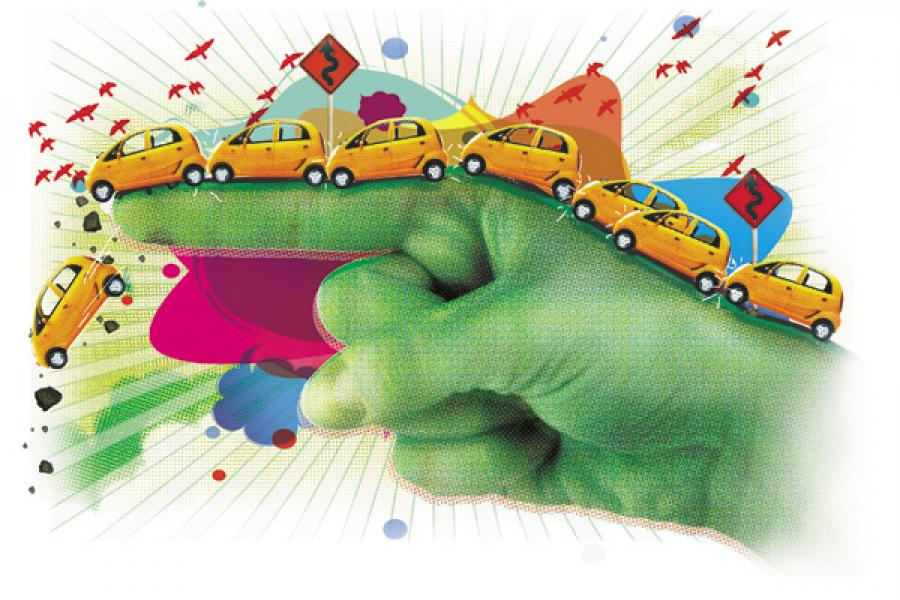
Is The Ultra Low-Cost Car Dream Over?
Tata Nano was hailed as the ‘people’s car’, but failed to deliver. Its competitors too have struggled. So, is there an ultra low-cost car segment at all?
No, the low-cost car dream is not over. Last year, the auto market got skewed because of the jumps in the price of petrol and diesel. For cars that have a wider customer base, more people who can afford to buy the car are finding it difficult to accept the price of petrol. Models without diesel variants, small and medium cars are not doing well. Now, it so happens that Tata Nano or Maruti Alto do not have diesel variants and the auto industry has a high interest cost. The effect you are seeing is a combination of many things. So, it is a question of affordability.
I think many people get carried away by the fact that if the selling price of a car is low, it is an end in itself. We have to keep in mind that in the life cycle of a car, the upfront cost of the car is only one-third of the total costs. Another one-third is spent on fuel, and then there is maintenance, insurance and such other things. When you talk about a low-cost car, you are only talking about one-third of its cost. The person who is going to buy it has to provide for the other two-thirds. So, is he able to maintain it? Is he able to run it? Does he have the resources for it?
We tend to feel that all two-wheeler owners will move into the small car segment because a motorcycle costs Rs. 40,000 and a small car costs Rs. 1 lakh or even more. A two-wheeler’s fuel efficiency is 60 or 70 km per litre and for a car it is 20 km per litre. A two-wheeler’s maintenance can be done anywhere; for a car, you have to take it to the company workshop and many people in that segment are overawed by these workshops.
The mindset of a two-wheeler customer is very different. He will look at what oil is being used and how much it costs, he will go out in the market to compare the price of parts. So, you have to look at the whole picture when you talk about a low-cost car. Once we do that, we have to understand who are the people who can afford to buy? And they may not be those who will upgrade from a two-wheeler.
As far as the Tata Nano is concerned, I am not a believer that anyone should say this is the cheapest car. Nobody would like to buy a product only because it is the cheapest. A car is an aspiration and is meant for family use. You may be producing it at that cost, but when you are selling it, the positioning has to be different.
Tata had other issues when they announced the launch. Supplies were not enough. There are two important things when you launch a new model. With all that fanfare and excitement, the network should be fully stocked. Riding on the initial euphoria, people want to buy it and then the company can’t say that they don’t have it. Nano went for bookings, which merely means rationing. Second, it is very important that you ensure a large number of your cars are visible on the road. With Nano this was a problem.
Also, the response from the company about the fire incidents was not very forthcoming. Any customer who wants to buy the car must know what happened, why it happened, and whether it will happen again. So, it is a combination of things that did not go correctly initially.
Finally, let us have more cars on the road. I would go and sell this car as the third car in a family. So, all those who can purchase it must get it. Let’s have more of that. When the two-wheeler guy or anyone who wants to buy a car for the first time sees that even a wealthy chap has a Nano, he will feel more confident. The aspiration goes up. In India, 60 to 70 percent of people buy cars by word of mouth. People should say, “Oh, it is a lovely car. I have been driving it. Maintenance is low, fuel efficiency is good and I am happy with it.”
(As told to Ashish K. Mishra)
(This story appears in the 06 January, 2012 issue of Forbes India. To visit our Archives, click here.)
-
 Lucas Pb
Lucas PbThe Nano is a nice car, and its price-tag is a miracle. Sure, cost of petrol is high and not in tune with the market segment the car was ment for. An alternative exists: the Nano (compressed) Air. The Nano Air can be easily engineered with a end-user cost of sompe Rs 60 / 100 kms and very low maintenance.
on Dec 27, 2011















